Struggling with irritation from hair removal creams? Sensitive skin can turn your hair removal routine into a nightmare.
In this guide, we’ll reveal the worst offenders and help you find the safest options for smooth, irritation-free skin.
Don’t risk another painful experience—read on to find the perfect cream for your skin!
Key Takeaways:
- Choosing the Right Hair Removal Cream for Sensitive Skin: Products like Veet and Silk’n are highly recommended for their gentle, soothing ingredients, such as aloe vera and chamomile, making them ideal for sensitive skin areas like the bikini line and underarms.
- Risks of Hair Removal Creams on Sensitive Skin: Improper use of hair removal creams can cause chemical burns and irritation, particularly when left on for too long. It’s crucial to patch test, follow instructions, and avoid use on broken or irritated skin.
- Natural Alternatives and Aftercare: Natural methods, such as sugaring and turmeric-based pastes, offer gentler hair removal options. To prevent issues like ingrown hairs, regular exfoliation and moisturizing are essential, along with immediate soothing for any irritation.
What Are Hair Removal Creams and How Do They Work?
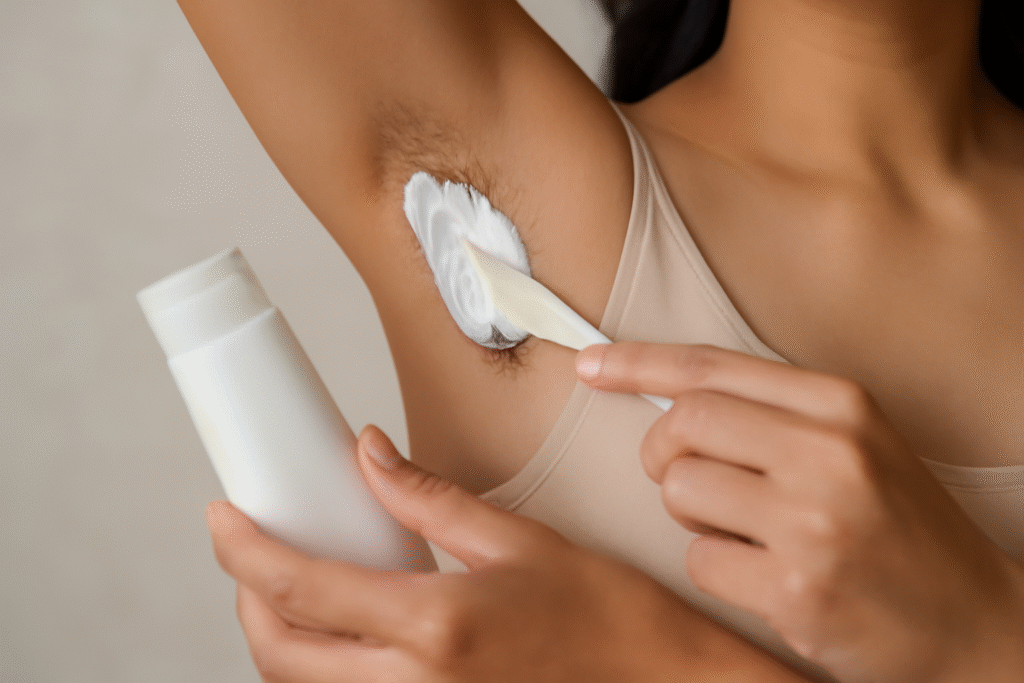
Hair removal creams, also known as depilatory creams, are products that help dissolve unwanted hair. Instead of pulling hair out from the root like waxing, they break down the hair at the surface of your skin.
How Hair Removal Creams Work
These creams contain active chemicals that break the bonds between the hair and the skin. Two common ingredients are calcium thioglycolate and sodium hydroxide.
- Calcium Thioglycolate: This ingredient weakens the protein structure of hair, making it easy to wipe away. However, if left on too long, it can irritate the skin.
- Sodium Hydroxide: Often found in stronger formulas, sodium hydroxide helps soften hair; however, it can be harsh for sensitive skin, potentially leading to redness or burns if misused.
Example: “Calcium thioglycolate is great for dissolving hair, but if left on for too long, it may cause irritation or burning.”
Active Ingredients and Their Effect on Sensitive Skin
For sensitive skin, these chemicals may not always be the best choice. Here’s why:
- Chemical Irritation: Both calcium thioglycolate and sodium hydroxide are powerful chemicals that can cause damage to delicate skin, leading to irritation, redness, or even burns, particularly in sensitive areas such as the bikini line or face.
- Skin Sensitivity: If you have naturally dry or thin skin, these chemicals can strip moisture, leaving skin feeling rough or tight.
For people with sensitive skin, choosing a gentler formula or opting for creams with added soothing ingredients (like aloe vera or chamomile) is key.
Comparison to Other Hair Removal Methods
- Waxing: Waxing pulls hair out from the root, which can be more painful than using hair removal cream. It may also lead to ingrown hairs or skin irritation, particularly in individuals with sensitive skin.
- Shaving: Shaving cuts hair at the surface. It’s easy to do at home, but it often causes nicks, cuts, or razor burn, and the results are less effective and shorter-lived compared to creams.
- Laser Hair Removal: This method uses light to target hair follicles. It offers longer-lasting results but requires several sessions and can be expensive. It’s often not suitable for darker skin tones or specific hair colors.
Compared to these methods, hair removal creams are often considered the quickest and least painful option, especially for individuals with sensitive skin. However, you should always follow the instructions carefully and patch-test the cream before applying it to large areas.
Why Sensitive Skin Needs Extra Care When Choosing Hair Removal Creams
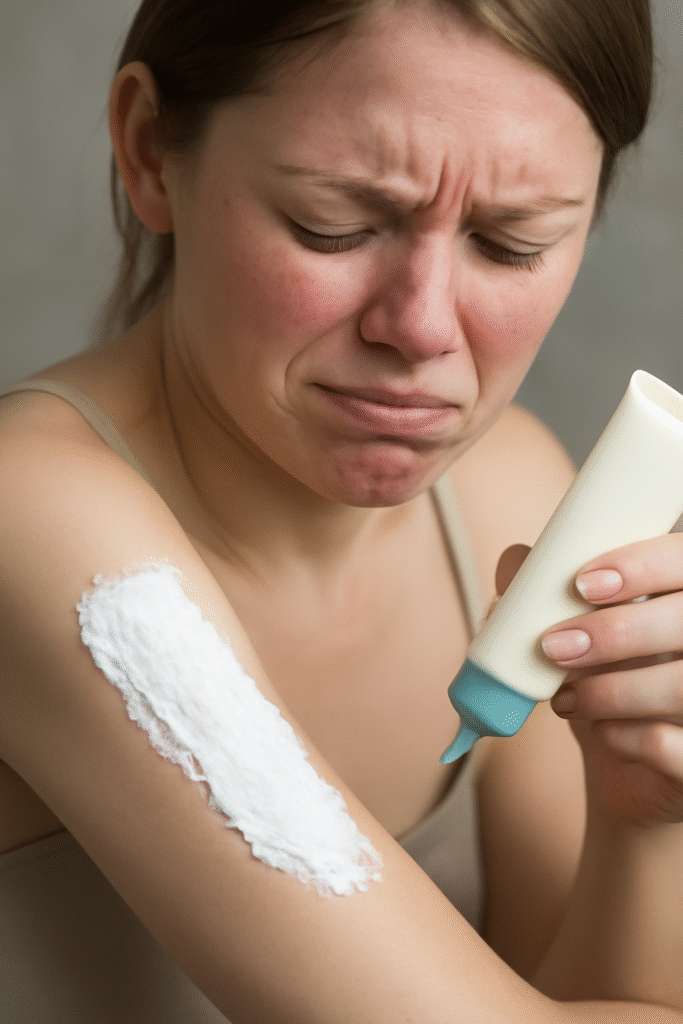
If you have sensitive skin, choosing the right hair removal cream is crucial. Sensitive skin is more prone to irritation, redness, and allergic reactions. It reacts quickly to certain chemicals and fragrances, which can cause uncomfortable burns or rashes.
Understanding Sensitive Skin
Sensitive skin refers to skin that is easily irritated by external factors, such as weather, skincare products, or chemicals. Common signs include:
- Redness after applying skincare products or after shaving
- Burning or itching sensation during or after hair removal
- Dry patches that may peel or crack when exposed to harsh chemicals
This skin type requires special care when choosing products, especially hair removal creams, because these creams contain strong ingredients designed to break down hair. Unfortunately, these ingredients can damage your skin, leading to painful reactions.
Harsh Chemicals and Their Effects
Hair removal creams often contain chemicals that dissolve hair at the root. While effective, these chemicals can be too strong for sensitive skin. Ingredients like calcium thioglycolate and sodium hydroxide are commonly used, but they are harsh and can cause:
- Rashes: The chemicals may irritate the skin, leading to red, itchy patches.
- Burns: If left on the skin for too long, these chemicals can cause actual burns.
- Allergic reactions: Some individuals may be allergic to specific ingredients, which can result in swelling, hives, or other uncomfortable symptoms.
For sensitive skin, it’s essential to seek products formulated with gentler ingredients and free from harsh chemicals.
Common Skin Conditions that Make Hair Removal Even Harder
Certain skin conditions can make using hair removal creams more difficult:
- Eczema: This condition causes patches of red, inflamed skin that can be extremely sensitive to touch. The chemicals in hair removal creams can trigger flare-ups.
- Rosacea: Rosacea causes redness and visible blood vessels on the face. Harsh hair removal creams can worsen the condition and cause additional irritation.
These conditions already weaken the skin’s protective barrier, making it more vulnerable to irritation. Using regular hair removal creams can exacerbate these issues.
Problematic Ingredients in Hair Removal Creams
Several ingredients found in hair removal creams can aggravate sensitive skin:
- Fragrances: Synthetic fragrances often trigger allergic reactions, causing rashes or burning sensations. Many hair removal creams use strong perfumes to mask the smell of chemicals, but these fragrances can be a nightmare for sensitive skin.
- Alcohol: This is a common ingredient in hair removal creams due to its preservative properties. Alcohol can dry out the skin, leaving it even more vulnerable to irritation and damage.
- Parabens: Used as preservatives, parabens can disrupt the skin’s natural barrier and cause allergic reactions.
What to Look for in the Best Hair Removal Cream for Sensitive Skin
When selecting a hair removal cream for sensitive skin, avoid products containing harsh ingredients, such as those mentioned above. Instead, opt for creams that are:
- Hypoallergenic: These are specifically designed for sensitive skin and are less likely to cause reactions.
- Fragrance-free: Opt for creams that are free from synthetic fragrances to minimise skin irritation.
- Moisturizing: Ingredients like aloe vera, chamomile, and vitamin E are gentle and soothing for the skin, helping to reduce irritation and dryness.
- Alcohol-free: To prevent the drying effect, choose creams that are free of alcohol.
Some products are specifically formulated for sensitive skin, such as Nair Hair Removal Cream for Sensitive Skin or Veet Gel Cream for Sensitive Skin. These are often a safer choice, as they contain added soothing agents and avoid harsh chemicals.
The Worst Hair Removal Creams for Sensitive Skin (The Last One Will Shock You!)
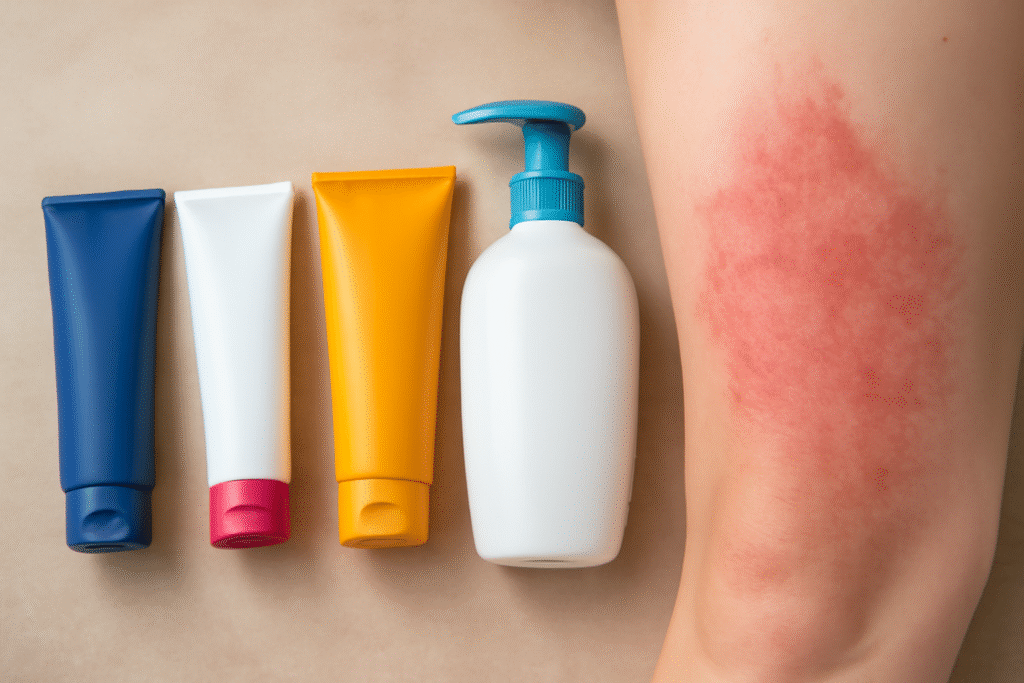
If you have sensitive skin, you know how challenging it is to find the right products. While hair removal creams promise smooth, easy skin, some can leave you with burns, rashes, or irritation. Let’s break down the worst offenders and what you should avoid.
1. Nair for Sensitive Skin
Despite its name, Nair for Sensitive Skin is often a hit-or-miss product. Many users report irritation even when following the instructions carefully. Why? Nair contains strong chemicals, such as calcium thioglycolate, which break down the hair but can also damage the skin.
User Quote:
“Nair burned my skin, even though I followed the instructions carefully.” – from Reddit users.
For those with sensitive skin, Nair’s formula is still too harsh. You might experience redness or a rash, especially if you leave it on for even a minute too long. A safer option? Look for creams specifically labeled for sensitive skin, featuring soothing ingredients such as aloe vera or chamomile.
2. Veet Gel Cream
Veet Gel Cream is another popular choice, but its fast-acting formula often does more harm than good. While it works quickly, the chemicals can be aggressive for sensitive skin. The problem with this cream is that it tends to strip away not just hair, but your skin’s natural barrier too, which leads to irritation and burning.
Some users report that it works well, but leaves their skin dry and itchy. If your skin’s sensitive, you need a product that hydrates while removing hair, not one that dries you out.
3. Sally Hansen Hair Removal Cream
Sally Hansen Hair Removal Cream claims to be effective and affordable, but it’s loaded with harsh chemicals. Ingredients such as mineral oil and fragrances can be too harsh for people with sensitive skin. These ingredients often cause irritation, itching, or even burning if left on too long.
For those with sensitive skin, using a cream with added moisturizers is crucial. Sally Hansen may remove hair, but it often leaves your skin feeling raw, dry, and irritated. Avoid using this product if you’re prone to skin reactions.
4. Shocking Discovery: The Last Product You Should Avoid
This one may surprise you. Nair for Face is an especially problematic product for people with sensitive skin. Many users have reported burning sensations, even after short applications. While Nair markets it as gentle for facial hair, the strong chemicals in this product can lead to more harm than good. Even users with normal skin report discomfort, so if you’ve got sensitive skin, you might want to skip this one altogether.
Many find that their skin becomes red and inflamed after just one use. It’s essential to always patch test a product, but with Nair for Face, the risk isn’t worth it.
What to Look for in a Good Hair Removal Cream for Sensitive Skin
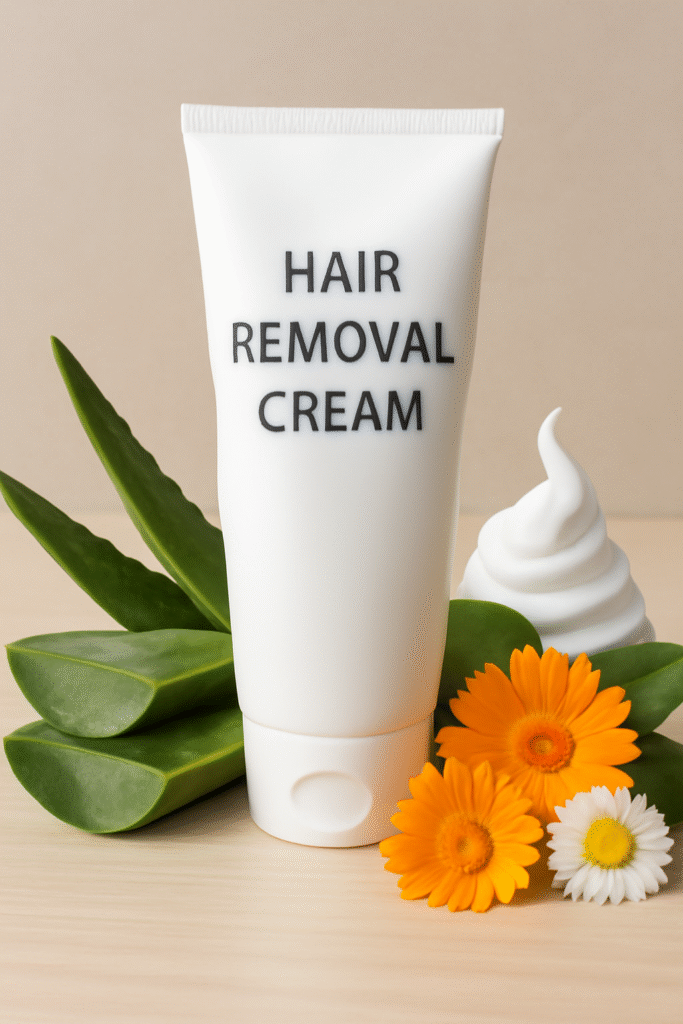
When choosing a hair removal cream for sensitive skin, it’s crucial to prioritize specific ingredients. Sensitive skin reacts quickly to harsh chemicals, so picking the right cream can make all the difference. Let’s break down what to look for:
1. Hypoallergenic Formulas
- What It Means: “Hypoallergenic” refers to products designed to minimize the risk of allergic reactions.
- Why It Matters: For sensitive skin, using creams with hypoallergenic ingredients is key. These formulas avoid common allergens, reducing irritation, redness, or itching.
- Example: Look for creams labeled “hypoallergenic” or “dermatologically tested” to ensure the cream is safe for your skin.
2. Moisturizing Ingredients
- Essential for Comfort: Moisturizing ingredients like aloe vera, chamomile, or vitamin E help soothe the skin after hair removal.
- Why They’re Important: After applying hair removal cream, your skin can feel dry and tight. These ingredients counteract that, keeping your skin hydrated and calm.
- Example: Choose creams with a high concentration of these ingredients. They not only protect your skin but also help it recover quickly.
- Top Picks: Check for formulas containing aloe vera for its cooling properties, chamomile for calming the skin, and vitamin E for nourishing.
3. Paraben-Free and Fragrance-Free
- Why They Matter: Parabens and fragrances are common irritants, especially for those with sensitive skin.
- What’s the Risk: Parabens are preservatives, and fragrances are added for scent. Both can cause allergic reactions, breakouts, or worse, exacerbate sensitive areas.
- Tip: Always opt for creams labeled “paraben-free” and “fragrance-free”. These formulas are gentler and reduce the risk of irritation.
- Example: Some of the best creams for sensitive skin are marketed as “fragrance-free” and “paraben-free,” specifically made for delicate areas.
4. Best Hair Removal Cream for Private Parts
- Why It’s Different: The skin around your private areas, like the bikini line or underarms, is more delicate and thinner. This requires extra care.
- Why You Need a Gentler Formula: Hair removal creams for these areas must be formulated to minimize irritation while maintaining effectiveness.
- What to Look For: Look for creams labeled for sensitive areas or for intimate use. These creams are specially formulated with mild yet effective ingredients, like aloe vera and chamomile, to prevent discomfort.
- Example: Try Nair’s Sensitive Formula or Veet’s Gel Cream for a gentler experience on sensitive skin.
5. Actionable Steps for Choosing the Best Cream
Step 1: Always Patch Test
Before applying the cream to a larger area, test it on a small patch of skin to ensure it is suitable. Wait 24 hours to see if you experience any redness, itching, or irritation.
Step 2: Look for Moisturizing & Anti-Inflammatory Ingredients
Choose a cream that contains moisturizing ingredients like aloe vera, anti-inflammatory ingredients like chamomile, and soothing agents like vitamin E.
Step 3: Read the Ingredients List
Avoid creams with parabens and fragrances. Stick to products that are specifically designed for sensitive skin to ensure a smooth, irritation-free experience.
Top 5 Best Hair Removal Creams for Sensitive Skin (2025 Edition)
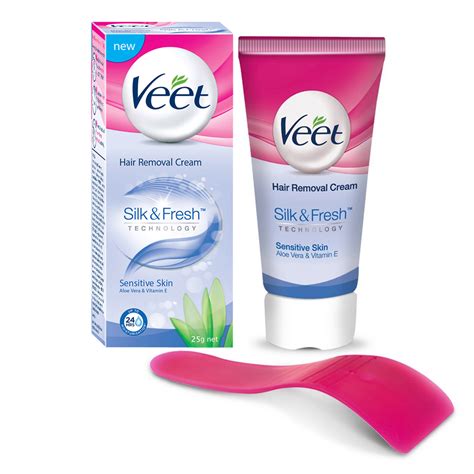
| Product Name | Best For | Key Ingredients | Rating (Out of 5) | Price Range |
|---|---|---|---|---|
| Nair Hair Removal Cream for Sensitive Skin | Body, Legs | Aloe Vera, Chamomile | 3.5 | $5–$7 |
| Veet Fast-Acting Gel Cream | Legs, Arms | Vitamin E, Aloe | 4.0 | $6–$9 |
| Silk’n Hair Removal Cream | Sensitive Skin | Green Tea, Vitamin E | 4.5 | $8–$12 |
| No Hair Crew Depilatory Cream | Intimate Areas | Aloe Vera, Shea Butter | 5.0 | $10–$15 |
| Cirepil Depilatory Cream | Body & Face | Chamomile, Green Tea | 4.5 | $15–$20 |
In-Depth Reviews
1. Nair Hair Removal Cream for Sensitive Skin
- Best For: Body and legs
- Key Ingredients: Aloe Vera, Chamomile
- Dermatologist Insight: Contains soothing agents but may cause irritation for some users.
- User Feedback: Some users report mild redness; patch testing recommended.
- Price: $5–$7
2. Veet Fast-Acting Gel Cream
- Best For: Legs and arms
- Key Ingredients: Vitamin E, Aloe
- Dermatologist Insight: Effective for quick hair removal; suitable for sensitive skin areas.
- User Feedback: Praised for quick action; some users note a slight scent.
- Price: $6–$9
3. Silk’n Hair Removal Cream
- Best For: Sensitive skin
- Key Ingredients: Green Tea, Vitamin E
- Dermatologist Insight: Gentle formulation with antioxidant properties.
- User Feedback: Well-received for its mildness and effectiveness.
- Price: $8–$12
4. No Hair Crew Depilatory Cream
- Best For: Intimate areas
- Key Ingredients: Aloe Vera, Shea Butter
- Dermatologist Insight: Specifically designed for sensitive areas; minimizes irritation.
- User Feedback: Highly recommended for bikini line and underarms.
- Price: $10–$15
5. Cirepil Depilatory Cream
- Best For: Body and face
- Key Ingredients: Chamomile, Green Tea
- Dermatologist Insight: Contains calming agents, making it suitable for facial use.
- User Feedback: Effective for facial hair removal; gentle on skin.
- Price: $15–$20
Expert Recommendations
- Patch Test First: Always perform a patch test 24 hours before full application to ensure no allergic reactions.
- Application Tips: Follow product instructions carefully; avoid leaving the cream on longer than recommended.
- Post-Application Care: After use, moisturize the skin to soothe and hydrate.
How to Safely Use Hair Removal Creams for Sensitive Skin: Step-by-Step Guide
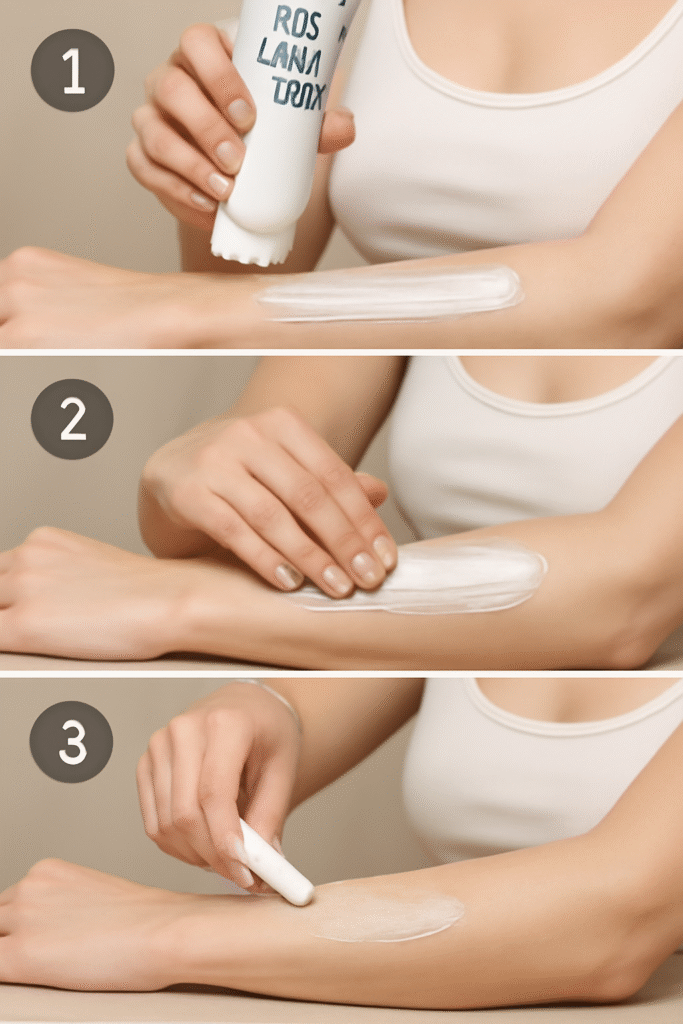
Using hair removal creams on sensitive skin requires careful attention. I’ve worked with clients for over 10 years, and these steps will ensure that you avoid irritation and get smooth, soft skin. Let’s break it down in a simple, effective way.
1. Patch Test: Always Start Small
- Before applying the cream to your whole body, test it on a small patch of skin.
- Apply a small amount to your inner forearm or behind the ear.
- Wait 24 hours to see if there’s any redness, itching, or irritation.
- This is the most crucial step to prevent a negative reaction.
2. Application Tips: Follow the Directions
- Carefully read the instructions on the packaging of your hair removal cream.
- Apply a thick layer of cream, covering the hair completely.
- Don’t rub it in—just spread it evenly on the skin.
- Don’t leave it on for longer than the recommended time. Leaving it on too long can lead to burns.
3. Post-Use Care: Soothe Your Skin
- After removing the cream, gently wash your skin with lukewarm water.
- Immediately moisturize with a hydrating lotion that’s free from alcohol or artificial fragrances.
- Aloe vera gel is a great option for cooling and calming the skin after use.
- This helps prevent dryness and irritation.
4. Avoid Sensitive Areas: Know Where Not to Apply
- Don’t use the cream on broken or irritated skin—this will worsen the irritation.
- Avoid applying cream to the areas around your eyes, lips, or genitalia.
- These areas have thinner skin and are more prone to irritation or burns.
5. Additional Tips: Give Your Skin Time to Recover
- Consider applying hair removal cream at night. This allows your skin to recover overnight.
- Hydrate well and eat foods rich in Omega-3 fatty acids, such as salmon or walnuts, to support skin health.
- If you have sensitive skin, try to limit your use of the cream to once a week.
Hair removal creams can be a great option for smooth skin, but treat your skin with care. By following these simple steps, you’ll minimise the risk of irritation and get the best results.
DIY Hair Removal Creams: Are They Worth the Risk?
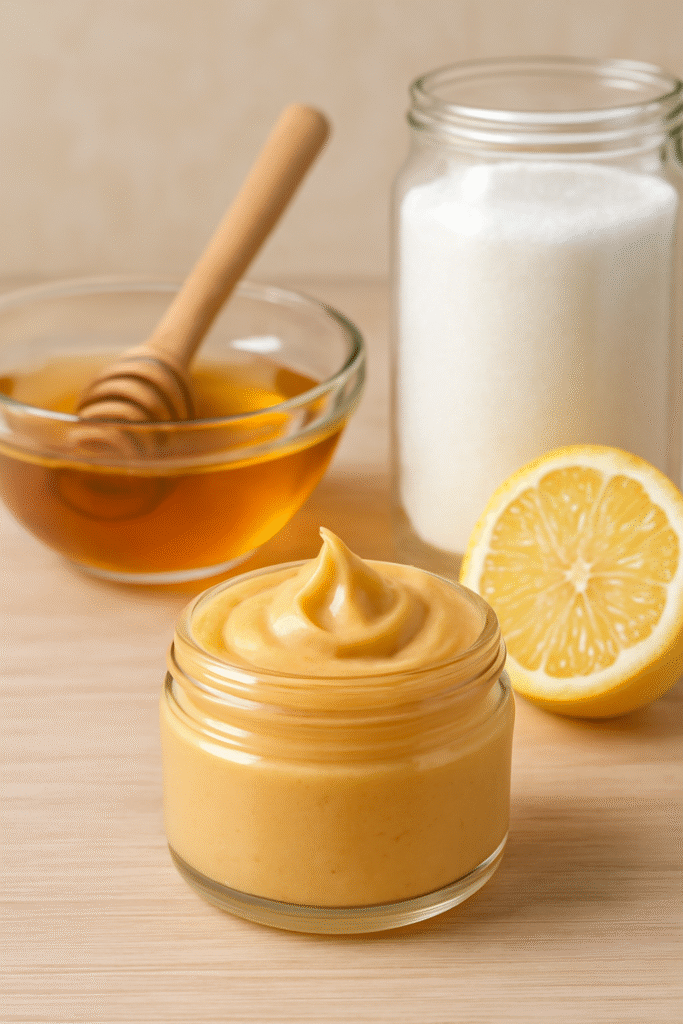
Pros of DIY Hair Removal Creams
Making your own hair removal cream at home can be an attractive option for some people. Here are a few reasons why:
- Natural Ingredients: Many homemade hair removal creams utilize natural ingredients, such as honey, sugar, and lemon juice. These ingredients are less likely to cause harsh side effects compared to chemicals in store-bought creams.
- Cost-Effective: DIY creams often cost much less than commercially available products, making them an affordable choice for those on a budget.
- Customization: You can control the strength and formulation, allowing you to adjust the recipe according to your skin type.
Risks of DIY Hair Removal Creams
While the DIY route can sound appealing, it comes with significant risks that shouldn’t be overlooked:
- Lack of Regulation: Unlike store-bought creams, homemade products aren’t tested for safety. This means there’s no guarantee that the ingredients you’re using will work or that they won’t cause harm.
- Skin Damage: Some DIY creams can irritate or burn the skin, particularly if left on for an extended period. Ingredients like lemon juice, which is acidic, can cause chemical burns if misused.
- Inconsistent Results: DIY creams might not effectively remove all hair, leaving behind patches or causing uneven results. Achieving smooth skin may require several attempts, and even then, the results may not be as reliable as those of store-bought products.
Safe Homemade Alternatives
If you want to try a more natural approach, here are a couple of safe, effective alternatives to consider:
Sugar Wax: Sugar wax is a popular, natural alternative to store-bought depilatory creams. It’s easy to make by mixing sugar, lemon juice, and water. Heat the mixture until it becomes a sticky, caramel-like consistency. Apply it to your skin, let it cool, and then pull off the wax along with unwanted hair.
Recipe:
- 2 cups sugar
- ¼ cup lemon juice
- ¼ cup water
Coconut Oil-Based Cream: Coconut oil is known for its moisturizing properties, which can help soothe the skin while gently removing hair. Mixing it with a few drops of essential oils, such as lavender or tea tree oil, creates a calming, natural solution.
Recipe:
- 2 tablespoons coconut oil
- 5 drops lavender or tea tree oil
These alternatives are generally safer and can be more soothing for sensitive skin compared to chemical-laden creams.
FAQs
1. What Are the Most Effective Hair Removal Creams for Sensitive Skin in 2025?
In 2025, products like Veet Sensitive Skin Hair Removal Cream and Flamingo Body Hair Removal Cream are highly recommended for their gentle formulations. These creams contain soothing ingredients such as aloe vera and vitamin E, making them suitable for sensitive skin areas like the bikini line and underarms.
2. Can Hair Removal Creams Cause Chemical Burns on Sensitive Skin?
Yes, improper use of hair removal creams can lead to chemical burns, especially on sensitive skin. It’s crucial to follow the product’s instructions carefully, conduct a patch test before full application, and avoid leaving the cream on longer than recommended. Dermatologists advise against using these creams on broken or irritated skin to prevent adverse reactions.
3. Are There Any Natural or Organic Alternatives to Chemical-Based Hair Removal Creams?
Yes, natural alternatives like sugaring and turmeric-based pastes are gaining popularity. Sugaring involves a paste made from sugar, lemon juice, and water, offering a gentler hair removal method with fewer chemicals. These methods can be effective for those seeking a more natural approach to hair removal.
4. How Can I Prevent Ingrown Hairs After Using Hair Removal Creams?
To prevent ingrown hairs, it’s recommended to exfoliate the skin before and after using hair removal creams. Regular exfoliation helps remove dead skin cells, allowing hair to grow out properly. Additionally, moisturizing the skin can keep hair follicles soft and reduce the risk of ingrown hairs.
5. What Should I Do If I Experience Irritation or Allergic Reactions After Using a Hair Removal Cream?
If irritation or allergic reactions occur, it’s important to rinse the affected area immediately with lukewarm water. Applying a soothing agent like aloe vera gel can help calm the skin. If symptoms persist or worsen, consulting a healthcare professional or dermatologist is advisable.


Leave a Comment